The official newsletter of Blue Morning Expressions - where the creativity never stops. Home of handcrafted polymer clay beads, canes and jewelry.
Thursday, September 27, 2012
Friday, September 21, 2012
Fire, Ice, Lava and Shiny Things!
While rolling across the state of Idaho, we came upon a sign that said:

Too cool!
Where else can you walk upon an ancient lava flow and explore a place where over 2,000 years ago, a split in the earth crust happened and the earth spilled out over 618 square miles. This lava field is not the result of a volcano that blows straight up or one that flows over the edge and flows to the sea like you see in Hawaii. This lava field is something that bubbled up out of a fault line and spread across a basin by the Snake River.
Okay, I love this volcano blowing up stuff, so let’s go look! Yay!
I was not prepared for this adventure because I did not know what I was going to see.
As you will see in my photos, there are so many different lines, designs, beautiful colors and amazing textures. Just look at this vast barren landscape that stretches on and on. This type of rock was one of many different types of lava that left its mark on the landscape.
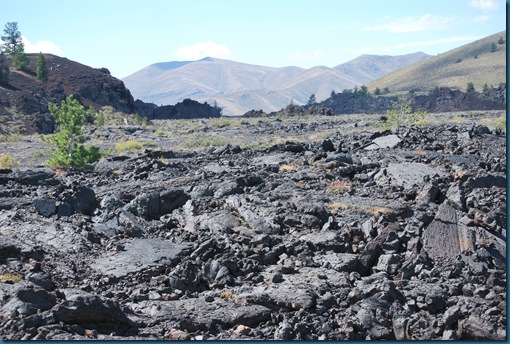
Twisted trees remain in a fossil state.
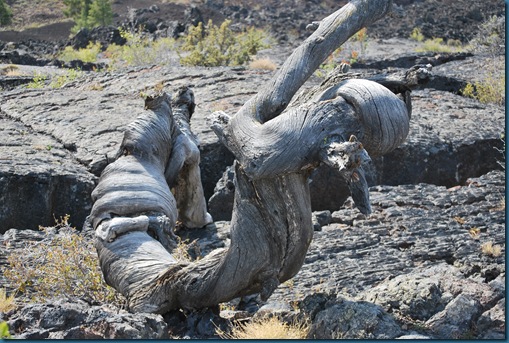
We wandered throughout the park that is filled with all this lava and an occasional bat cave, which you were not allowed to go into unless you had both a permit and a hat. Flashlights were recommended as well.
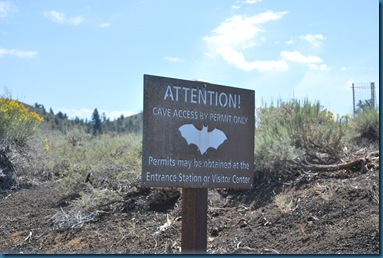
Take a look at this amazing lava rock.
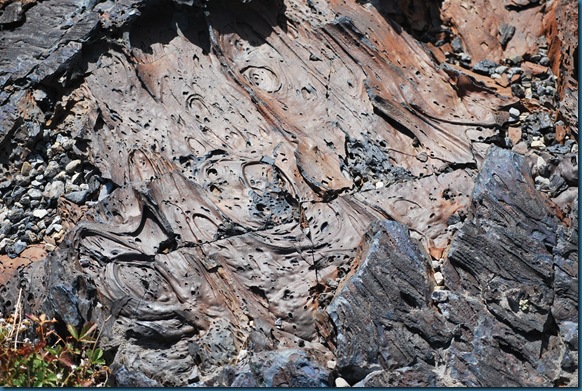
The park is filled with these cones too. These cones are the result of the lava bubbling straight up, which crumbled into these huge towers of cinders. This is where I got really excited!
Here is what the cinder cone looked like with some crazy lady heading up the hill. It was steep!
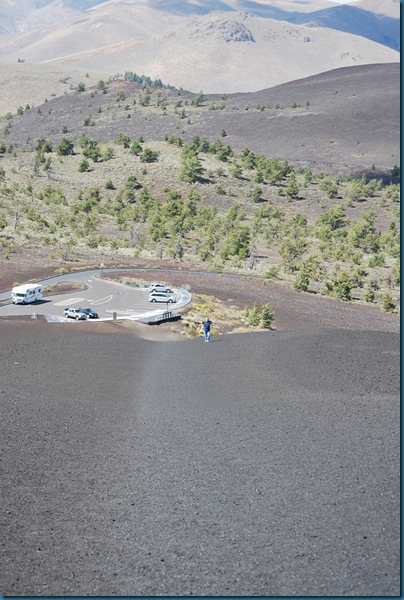
But as I was dragging myself back down the hill after getting to the top, I was looking at the cinders and I noticed something. This was a bright brilliant sunshiny day and all the rocks sparkled and shone, but until I looked closely at them, I did not realize what was making them sparkle.
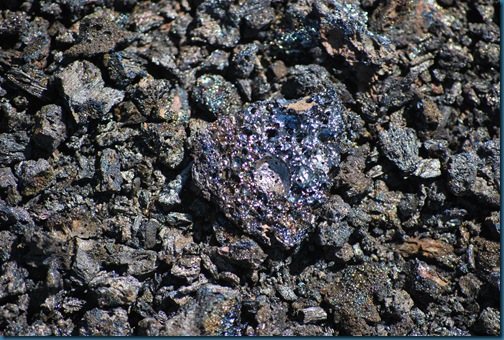
Look at all that iridescence! As a jewelry designer, bead making and all around shiny lovin’ kinda gal, this got me all excited. I started taking pictures of every piece of rock up close.
The USGS says that
“The freshness of the iridescent glassy surface and the cooling time of the rock determine the luster and color.
When molten lava chills quickly, a thin, glassy rind forms on the exposed surfaces because crystallization of the minerals in the melt could not take place in such a short time. This layer of glass provides the iridescent luster to the rock. When crystallization occurs, the first minerals to crystallize are mafic minerals, which are dark-colored and contain abundant iron and magnesium. Rocks that cool quickly, especially the outer layers of a flow, are primarily composed of glass particles and tiny mafic minerals. This is why the outer surface of a flow is black.”
I loved the colors and the experience that was way off the beaten path at this National Park and Monument. If you want to read more about this park, then use this link to visit the official site for the Craters of the Moon Park.
http://www.nps.gov/crmo/naturescience/geologicactivity.htm
I have many, many more photos of this wonderful landscape and if you would like to see them, I will set up a page specifically for them. I
Enjoy!
Julie and Blu
Too cool!
Where else can you walk upon an ancient lava flow and explore a place where over 2,000 years ago, a split in the earth crust happened and the earth spilled out over 618 square miles. This lava field is not the result of a volcano that blows straight up or one that flows over the edge and flows to the sea like you see in Hawaii. This lava field is something that bubbled up out of a fault line and spread across a basin by the Snake River.
Okay, I love this volcano blowing up stuff, so let’s go look! Yay!
I was not prepared for this adventure because I did not know what I was going to see.
As you will see in my photos, there are so many different lines, designs, beautiful colors and amazing textures. Just look at this vast barren landscape that stretches on and on. This type of rock was one of many different types of lava that left its mark on the landscape.

Twisted trees remain in a fossil state.

We wandered throughout the park that is filled with all this lava and an occasional bat cave, which you were not allowed to go into unless you had both a permit and a hat. Flashlights were recommended as well.

Take a look at this amazing lava rock.

The park is filled with these cones too. These cones are the result of the lava bubbling straight up, which crumbled into these huge towers of cinders. This is where I got really excited!
Here is what the cinder cone looked like with some crazy lady heading up the hill. It was steep!

But as I was dragging myself back down the hill after getting to the top, I was looking at the cinders and I noticed something. This was a bright brilliant sunshiny day and all the rocks sparkled and shone, but until I looked closely at them, I did not realize what was making them sparkle.

Look at all that iridescence! As a jewelry designer, bead making and all around shiny lovin’ kinda gal, this got me all excited. I started taking pictures of every piece of rock up close.
The USGS says that
“The freshness of the iridescent glassy surface and the cooling time of the rock determine the luster and color.
When molten lava chills quickly, a thin, glassy rind forms on the exposed surfaces because crystallization of the minerals in the melt could not take place in such a short time. This layer of glass provides the iridescent luster to the rock. When crystallization occurs, the first minerals to crystallize are mafic minerals, which are dark-colored and contain abundant iron and magnesium. Rocks that cool quickly, especially the outer layers of a flow, are primarily composed of glass particles and tiny mafic minerals. This is why the outer surface of a flow is black.”
I loved the colors and the experience that was way off the beaten path at this National Park and Monument. If you want to read more about this park, then use this link to visit the official site for the Craters of the Moon Park.
http://www.nps.gov/crmo/naturescience/geologicactivity.htm
I have many, many more photos of this wonderful landscape and if you would like to see them, I will set up a page specifically for them. I
Enjoy!
Julie and Blu
Subscribe to:
Posts (Atom)